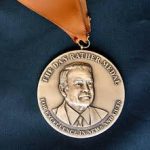Study: ASMR-Inspired Advertising on New Media Can Be More Effective Than Traditional Media
A new study has found that autonomous sensory meridian response (ASMR)-inspired advertising is considered calmer and more relaxing and can grab participants’ attention to deliver product benefits, a response that television and social media does not always accomplish.
ASMR is a term used to describe a tingling, static-like, or goosebumps sensation in response to specific triggering audio or visual stimuli. These sensations are said to spread across the skull or down the back of the neck and, for some, down the spine or limbs.
The findings by University of Florida College of Journalism and Communications alumna Susanna Lee and Huan Chen, Advertising associate professor and department chair, are featured in “Can We Turn ASMR Experiences into Advertising?” published in the Journal of Advertising Research on Oct. 16.
Lee and Chen’s study used in-depth interviews and social media text mining to examine college-aged consumers’ experiences, uses and interpretations of ASMR content and advertising.
They found that individuals’ experience and understanding of ASMR content and advertising suggest that new media (e.g., YouTube) are better channels than traditional media (e.g., television, radio) and grab consumers attention better than traditional advertisements.
According to the authors, “As the potential relationship between ASMR and misophonia, or hatred of sounds, was found, brands must understand the most favorable and effective ASMR triggers that could turn advertising into positive experiences.”
They add, “When people are curious, they become fully aware and receptive to whatever is happening in the present moment. Triggered curiosity motivates them to investigate, get immersed, and learn about the puzzling and novel stimuli that immediately grab their attention.”
Category: Alumni News, College News
Tagged: Advertising ASMR Huan Chen New Media Susanna Lee
Subscribe to our News Digest


